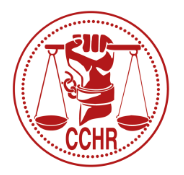In September, the American Academy of Pediatrics demanded increased FDA warnings about psychotropic drugs causing diabetes and other health problems in children. Despite the contradiction, the American Academy of Pediatrics just now approved testing even more children, as young as four years old, for ADHD — perhaps failing to realize this would result in more drugging, with more dangerous side effects. Statistically, 60 percent of those children diagnosed are prescribed drugs such as Ritalin, Vyvanse, and others. And scientifically it is a fact that the younger and smaller the body, the greater the sensitivity and reaction to drugs. The tragic suicide by seven-year-old Gabriel Myers, kept on a heavy cocktail of drugs while under foster care, is a case in point revealing the dangers of drugging ADHD in children. Lowering the age level to four is the wrong way to go, say many mental health professionals.
 These professionals assert that the cause of children’s frustration, disinterest or “hyper”active restlessness may often be as simple as fatigue, lack of exercise, poor nutrition, turbulent homes, underlying physical conditions, or over-confinement at desks. Factually, each child’s environment is different, and some families lack the wherewithal to provide enough good nutrition, attentive parenting or a household peaceful enough for homework or even a good night’s sleep. Without these factors, some children may seem more “problematic” when tested, than others. More testing for ADHD in children, will likely wind up targeting more of these children, who in fact are not “disordered”, but rather come from disordered environments.
These professionals assert that the cause of children’s frustration, disinterest or “hyper”active restlessness may often be as simple as fatigue, lack of exercise, poor nutrition, turbulent homes, underlying physical conditions, or over-confinement at desks. Factually, each child’s environment is different, and some families lack the wherewithal to provide enough good nutrition, attentive parenting or a household peaceful enough for homework or even a good night’s sleep. Without these factors, some children may seem more “problematic” when tested, than others. More testing for ADHD in children, will likely wind up targeting more of these children, who in fact are not “disordered”, but rather come from disordered environments.
Interestingly enough, statistics show that African American as well as Hispanic children are more often diagnosed with ADHD and subsequently drugged; and that boys, generally, are diagnosed more than girls. Several developmental scientists point out that boys “mature” later than girls, and are, because of hormonal differences, more active. That boyhood has now apparently become a disease called “ADHD”, is an unfortunate consequence of this mislabeling of behaviors. Furthermore, those unfortunate children in foster homes, out of parental and public view, are liberally prescribed psychotropic drugs, all covered by Medicaid, spending billions of dollars annually on “meds” with dangerous side effects, especially for young children.
The diagnosis of “ADHD in children” lists behaviors which are not only common, but which prior studies have proven to be quite normal in children, who would outgrow them if given the chance. But by labeling them as disorders, teachers and parents, rather than improve their own tactics, choose the far easier way out, by giving their children a drug “fix”. This of course is because there is something wrong with the children, not the caretakers, in the psychiatric way of thinking.
By judging children’s behavior as “good” and “bad”, normal or disordered, we de-emphasize the caretaker’s need to understand children’s reactions, find and increase children’s interest, and help them overcome fears or inabilities. Relegating a child to a “disordered” label, and perhaps a lifelong prescription, is quite a sentence to pass on a child; and to judge them before they are easily able to express their feelings, frustrations or confusions, is certainly premature. Children, with less command of the language, are perhaps merely manifesting their need for more physical activity, for understanding the environment through physical contact as opposed to book learning, and/or for more practice coordinating their bodies. Precisely because they lack vocabulary and language abilities, children’s learning can be blocked by enforced, inactive book “learning”, geared towards the recent emphasis on test scores, rather than true, useful learning. The cause is not a “mental disorder”, but inappropriate teaching methods.
It must be remembered that children of four, six, 10 and even 16 years of age, are still growing physically, and must continue to do so, to successfully reach adulthood. Amphetamines such as Ritalin have been proven to stunt both skull and total body growth, along with their FDA-warned dangers of diabetes, heart condition, stroke and early death. Clearly there must be a better way to treat children.
Rather than expand the labeling and inevitable drugging of ADHD in children, it would be wiser to spend those tax dollars on more teachers, more teacher training, more enriching after-school care, more workers to assist parents in providing nutrition and healthy home environments for children. Such a valuable program would make an actual difference, generating better behavior in children because they are healthier and happier.
The Drugging of Our Children
Diagnosing ADHD Under Age 6: A Mistaken Idea – Child In Mind – Boston.com
Free Baker Act Help - Call Us: 800-782-2878
info@cchrflorida.org


0 Comments